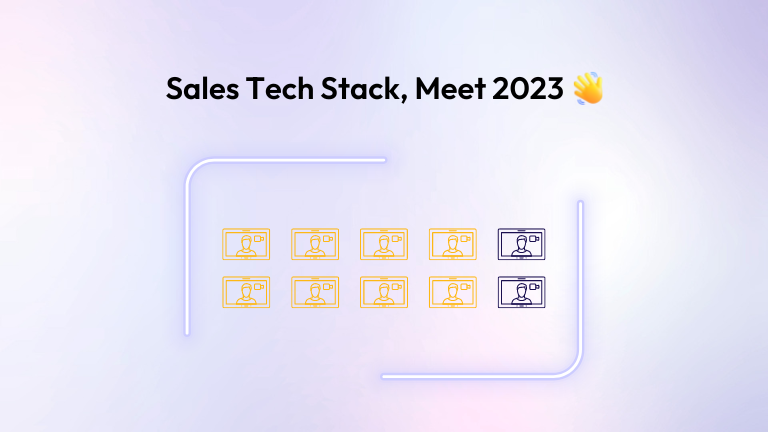TL;DR: Recessions force people to cut costs and business leaders often end up making short-term decisions that ultimately hurt their business. This post provides a framework for cutting technology and tooling costs without hurting business, specifically for revenue leaders.
2023 is almost here. By all accounts, it is going to be a recession year.
One activity that goes hand-in-hand with recession years is cost-cutting. Both are almost made for each other.
Two primary areas where companies tend to cut costs are 1. people and 2. costs.
Salaries make for 18 to 52% of the company expenses as per SHRM, and almost always get the first axe if there is no option but to cut costs significantly.
The second area where budgets often get slashed is tools. In the revenue space where we operate, this pattern is almost consistent.
However, too many companies do it the wrong way.
They stop evaluating new tools altogether.
They put in place blanket budget freezes.
They take out recent tools that are not yet fully adopted.
This always comes back to hurt when the sun starts shining again because they haven’t prepared for the good days. But more so, even when the sun is not yet shining.
Let me explain.
When people are laid off, targets are never ever reduced proportionately. So now, fewer people need to do more work, aka be more productive. And guess what is the fastest way to productivity?
It’s tools and technology.
Now, one cannot deny that the budget constraints are real, and hence the need to cut costs is real. So here is a 5-point framework to keep enhancing productivity and becoming future-ready, while managing your budget constraints. As Gartner says:
The opportunity is enormous — but only for progressive chief sales officers (CSOs) who act promptly to build adaptive systems to engage the “everywhere customer.”
(This framework is for revenue orgs, although general principles apply to other parts of the organization as well)
A 5-point Framework To Reassess Your Tech Stack In 2023
1. Put line of sight to revenue under a magnifying glass
Not all tools and technologies impact revenue. Often, we adopt tools because they have become staple. And just like advertising, many of them do not move either the topline or the bottomline.
In recession years, make revenue impact your key criteria. Direct when possible, but don’t rule out indirect impact completely as long as you can get visibility. If you have to reduce your tooling spends, slow down on tools that do not move the revenue needle.
2. Do smaller rollouts
In times like these, most companies stop new tool evaluation almost completely. This is the biggest mistake one can make. You should continue evaluating tools as if nothing has changed. Yes, indeed.
However, change the way you do the rollouts. Unlike earlier, stop doing ‘all the way or nothing’ rollouts. When you feel very confident of a tool’s impact on revenue, go ahead and roll it out. However, if you are not 100% there but you see the signs, or if the budgets are extremely hard, do a smaller rollout. Have one region/segment’s team start using the product. Roll it to 10% of your organization. Do a control group experiment. Measure the impact.
Expand the budget for those tools that are moving the needle. Contract it for others.
3. Pay attention to your top performers and peers
Often, tool strategy follows a plan made earlier at some company offsite – especially for larger organizations. Stop relying on that, become nimble. Watch what your top reps are paying out of their own pocket for. If 3 of your top reps have started using the same tool, odds are that it is valuable. See what your peers in the industry are raving about. What is moving the needle for them.
However, keep the first point in mind. Not every popular tool is popular because it moves the needle. Look deeper for revenue impact.
4. Add nuance to your review
Almost all organizations, big or small, review their spending during hard times. However, too often, organizations adopt an ‘all or nothing’ strategy. That is a bad approach.
You should add nuance to your re-evaluation. Is it really an ineffective tool or does the team just need training or? Is it having a clear revenue impact or not? Is it too new and the team is just coming to grips with it? Has the team tried and moved on to other options?
Yes, it is a slightly harder approach, just like all good things are. However, it is an effective approach.
5. Prioritize assistive AI and digital technology
If it’s not clear, the future is digital. Gartner says that 80% of sales interactions will be online by 2025. AI tools still have a long way to go, but are already making a meaningful impact on the results. Their impact is going to increase exponentially as the technology matures and teams develop better playbooks to leverage them. As I have written earlier, adopting innovative technology is hard but it’s the only way to get a competitive advantage out of your tool stack. Don’t let this stop.
AI-guided selling is the future of sales, as Harvard Business Review says. Your employees who are now chasing bigger targets in a recession would be happy you have given them some superpowers in a harsh environment. Your leadership will be happy when business picks up speed again because when the laggards will be struggling to put on their shoes, you will already be running.
Despite the general market conditions, this is a great time for leaders and enablement teams to evaluate new technology with a sharp eye on value. It is during times like these that winners separate themselves from the also-rans. So take control of the situation, don’t let the situation control you.



